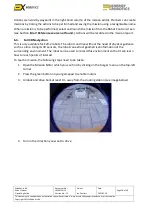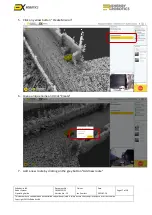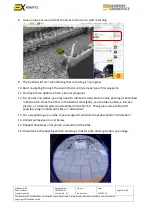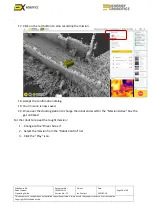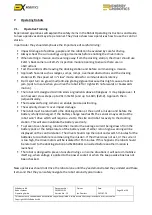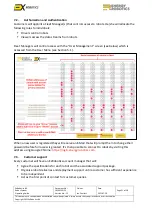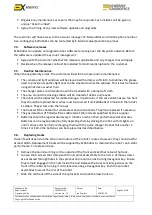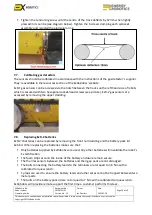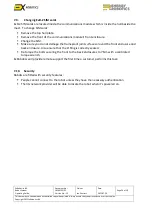
ExRobotics B.V.
Robot System
Operating Guide
Document No.:
20190122IP1
Version No.: 12
Owner:
Ian Peerless
Date:
2021-07-20
Page 9 of 30
This document is considered an uncontrolled copy when printed. Always ensure that you print and use a current version.
Copyright 2021 ExRobotics B.V.
The docking station should be powered up at all times since charging may be disrupted if
it’
s
switched on when the robot
’s
already docked. Also, i
t’s best not to switch off the robot (using t
he
black On/Off switch) when the robot is in the docking station since this too can disrupt charging. If
this happens pull the robot 30cm back and switch it off and on again.
When a driver checks the “
Wake Up
”
box the robot video streams will typically appear within 1
minute. The robot is then ready to use although i
t’s best to allow
some gas sensors 30 minutes to
warm up before starting a mission (see their instructions).
A power socket module (when fitted) enables the robot to be charged within 3 hours. This requires
the robot to be manually plugged into a power supply using a quick-charger that can be ordered
with the robot. The quick-
charger’s lead is typically 3 meters long.
If the robot is docked you should
first switch off power to the induction charger. When inserting the quick-charge plug, rotate the
entire body clockwise before tightening the ring around its base. You can check the status of the
charging using the LEDs and instructions on the quick charger.
5.
Cloud Software
Robots are
operated and data is collected using the “cloud”.
Access is granted as described in
Section 7.2. Six types of screens are available as described below.
5.1.
Fleet Management and Fleet Status
Fleet Management is the first screen that appears when users log on. It allows them to connect to
any robot to whic
h they’ve
been granted access. Scrolling down reveals more robots.

















